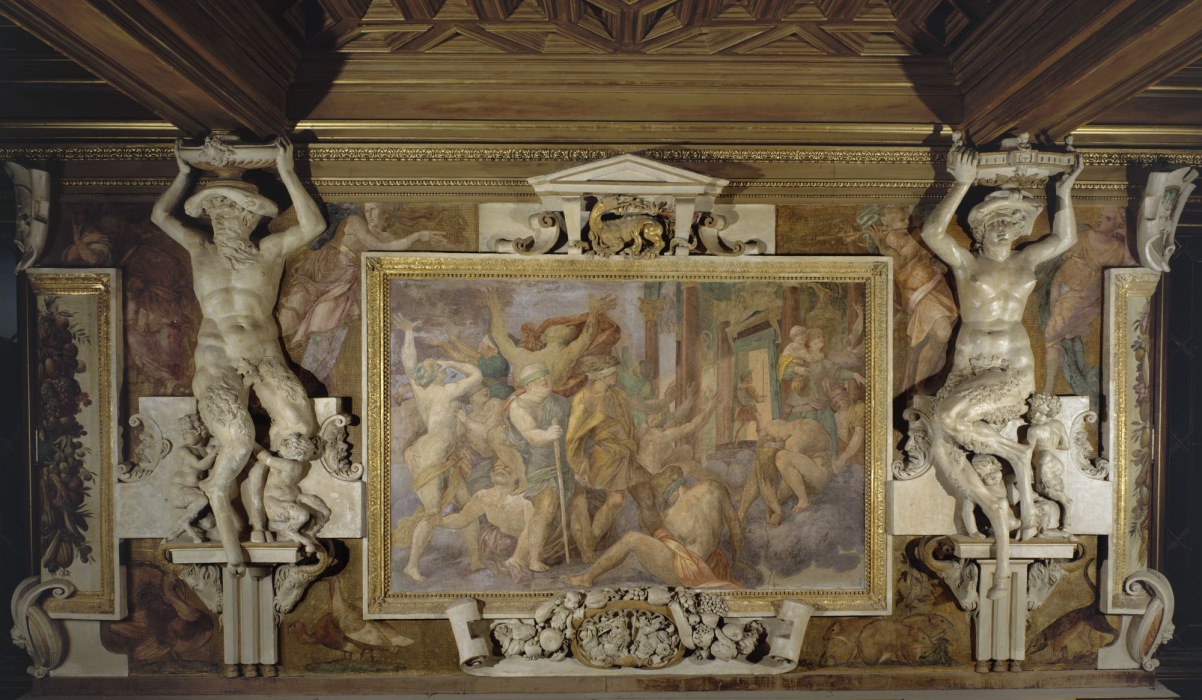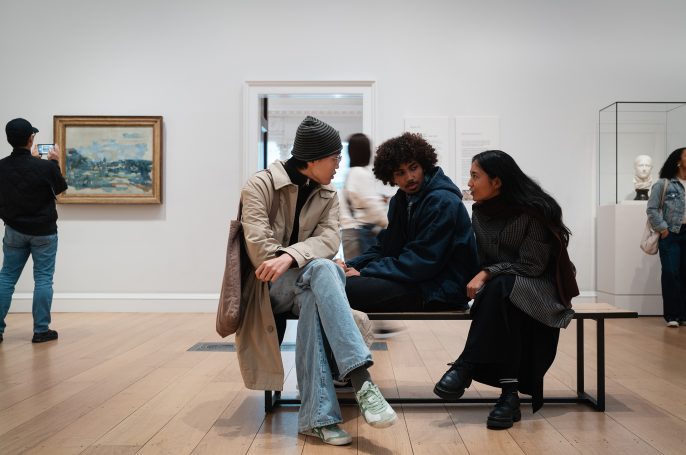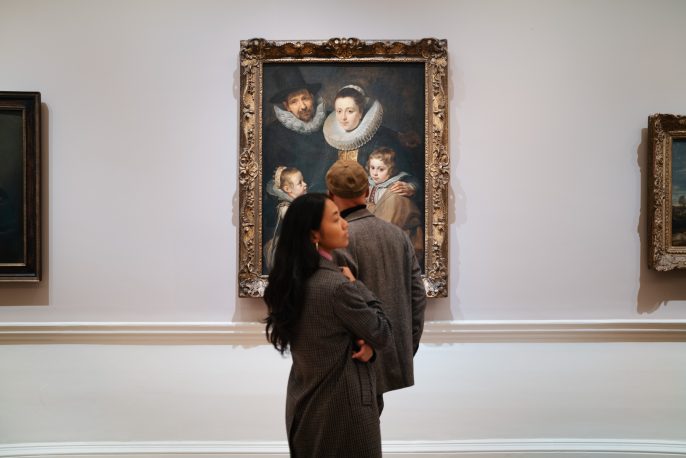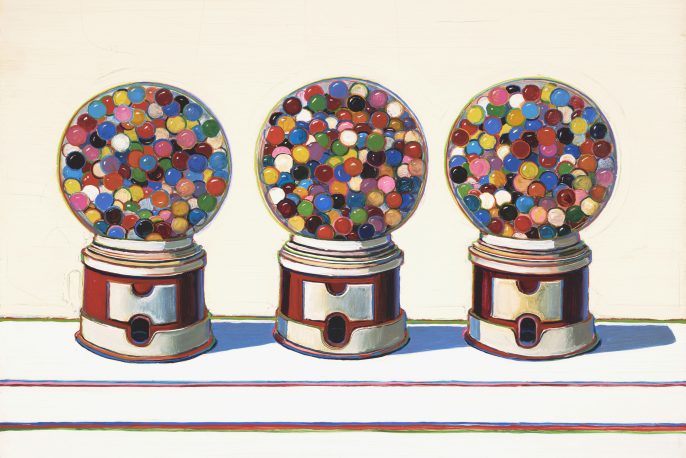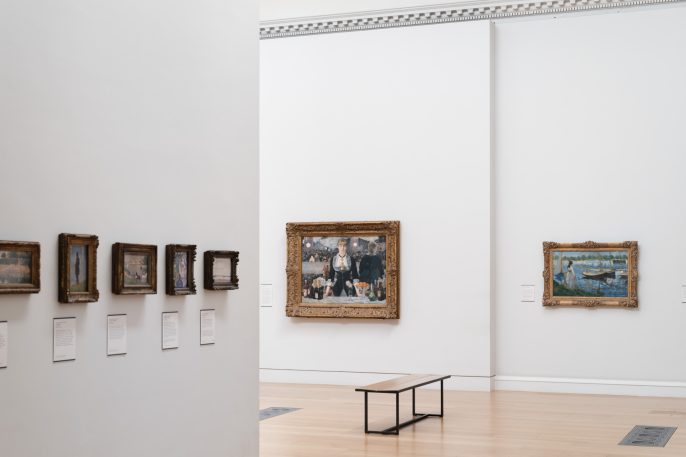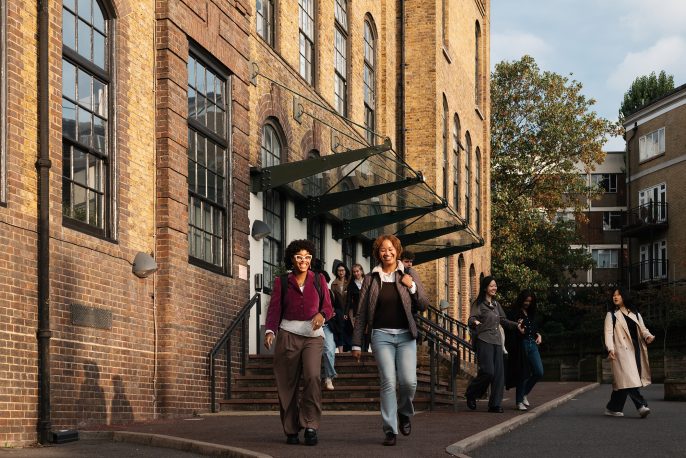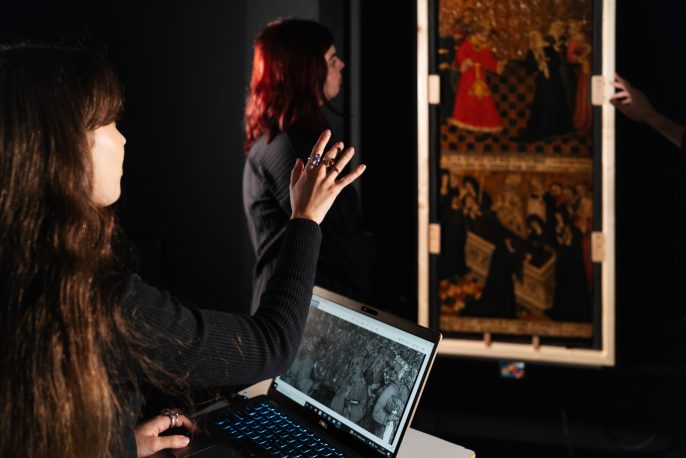Fontainebleau is not just one monarch’s palace, it belonged to them all, a “family home” for the kings of France, passed down from generation to generation from the Middle Ages to the 19th century. While the medieval origins of the castle are still visible in the former keep – which dominates the Oval Courtyard – it was Francis I, seduced by the site and the forest, who in 1528 commissioned spectacular redevelopments. He had the medieval palace turned into a large Italianate palace, as a reflection of the power of a learned and art-loving king. To this day the château retains significant vestiges of the decoration and ornamentation from the French Renaissance, the principles of which were imported by Italian artists invited to Fontainebleau by Francis I (such as Rosso Fiorentino and Francesco Primaticcio).
Several interior decorations still remain, including the King’s gallery, the bedchamber of the duchess of Etampes, the ballroom, and the Golden gate. They attest to a new age in European art and can be reconsidered in the light of recent restorations and re-interpretations.
Today this heritage obliges us and the teams of the castle of Fontainebleau to work for its preservation but also for its large audience of visitors who no longer necessarily have the keys to understand it. The seminar will be an opportunity to ask: how do we deal with such a heritage today?
Muriel Barbier is a chief curator. She specialised in the history of architecture, furniture and interior decoration of the modern era (15th-18th centuries). She is a graduate of the École du Louvre and the Institut national du patrimoine, and director of heritage and collections at Château de Fontainebleau. She worked as registrar at the Musée Lorrain in Nancy, as a documentalist at the section “History of the Louvre”, and as a curator in the museums of Senlis, the Renaissance National Museum at Ecouen, and at the Mobilier national. Among other publications, she has written the catalogue of the textile collection of the Renaissance national museum, a monograph on the Elysée palace, and several exhibition catalogues, including Imperial silks for Versailles (Versailles, 2024), Palais disparus de Napoléon Ier (Paris, Mobilier national, 2021), Theatre in the Renaissance (Ecouen, 2019), Louise de Savoie, mother of François Ier (Ecouen, 2015) and Music in the Renaissance (Ecouen 2013).
Organised by Guido Rebecchini, Professor of Sixteenth-Century Southern European Art, The Courtauld.
